Key takeaways:
- Student-centered learning empowers students, encouraging them to take ownership of their learning and voice their opinions, leading to deeper engagement and understanding.
- In religious education, this approach fosters personal connections to faith by allowing diverse perspectives and promoting meaningful dialogue among students.
- Key principles like curiosity, community support, and growth-focused assessment enhance the educational experience, motivating students to take charge of their learning journeys.
- The future of religious education will likely rely on collaboration, technology, and experiential learning to build understanding across diverse beliefs and enhance spiritual exploration.
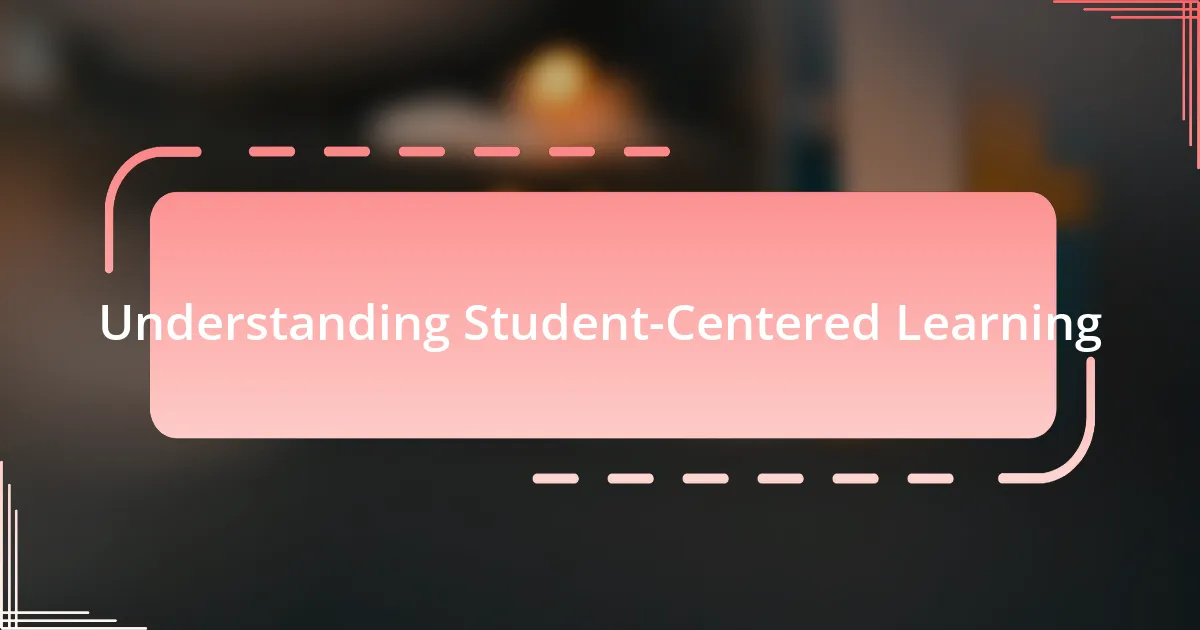
Understanding Student-Centered Learning
When I first encountered student-centered learning, I was struck by how it flips the traditional teaching model on its head. Instead of being the sole authority in the classroom, educators become facilitators, allowing students to take the lead in their learning journey. This approach resonates with me because it cultivates autonomy and encourages students to voice their opinions and interests, creating a more dynamic learning environment.
One of the most profound aspects of student-centered learning is that it recognizes and values individual experiences. I recall a discussion in a religious education class where students were encouraged to share their personal beliefs. That moment became a rich tapestry of perspectives, transforming our lesson into a collaborative exploration of faith. Can you imagine the depth of understanding that emerges when students feel empowered to share their stories?
Understanding student-centered learning goes beyond theory; it’s about fostering relationships and building community. I often wonder, how can we truly gauge a student’s grasp of a subject if we don’t give them the space to express themselves? By embracing their unique insights, we create an inclusive atmosphere that not only enhances knowledge but also nurtures empathy and connection among students.

Importance in Religious Education
The importance of student-centered learning in religious education cannot be overstated. It allows students to engage with their faith on a personal level, fostering a deeper connection to their beliefs. I remember a workshop where we explored different interpretations of sacred texts. The diversity of thought not only enriched my own understanding but also helped peers feel seen and heard in their unique journeys.
Creating a space for students to explore their identities within religious education is vital. When students are encouraged to ask questions and express doubts, it sparks meaningful dialogue. I often reflect on a moment when a classmate challenged a traditional viewpoint. Instead of shutting down the conversation, we dove deeper, which ultimately led to a richer understanding of our faith and its complexities.
Emphasizing student voices within religious education cultivates a sense of belonging and community. Have you ever felt that moment when a group discussion leads to insights that resonate with everyone? It’s transformative. This approach not only strengthens their grasp of religious concepts but also inspires them to carry these discussions beyond the classroom, enriching their lives in a profound way.
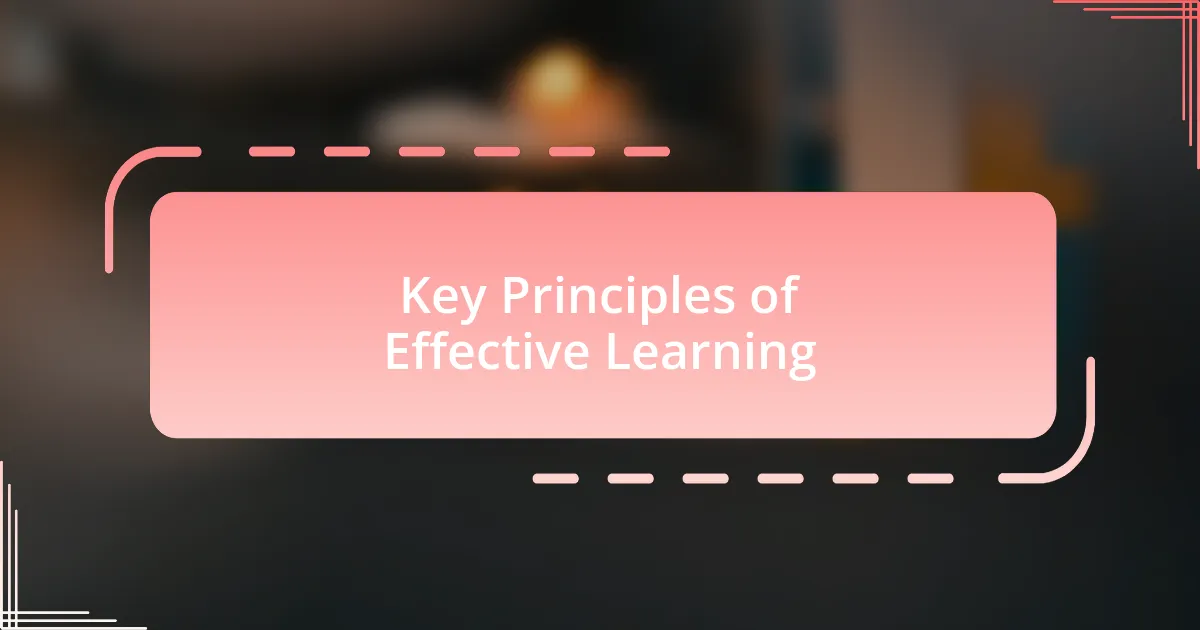
Key Principles of Effective Learning
Understanding key principles of effective learning is essential for creating an enriching educational environment. I’ve found that one of these principles is fostering curiosity. When students feel free to explore their interests, it transforms the learning experience. I recall a time when I was encouraged to research the historical context of a religious figure that intrigued me. This exploration not only deepened my knowledge but ignited a passion for learning that stayed with me long after the discussion ended.
Another critical principle involves building a supportive learning community. When I participated in small group discussions, my peers’ perspectives often opened my eyes to interpretations I hadn’t considered. It’s fascinating how communal learning can elevate understanding. Have you ever noticed how sharing insights within a group makes concepts resonate more deeply? I have, and I believe it nurtures a richer educational experience where students feel valued and empowered.
Finally, assessment as a tool for growth instead of judgment can significantly enhance effective learning. Instead of merely receiving grades, I once experienced feedback that focused on my strengths and areas for improvement. This approach motivated me to take ownership of my learning journey. How might this shift in perspective change the way students view challenges? In my experience, it creates resilience and a willingness to embrace learning as a lifelong endeavor.
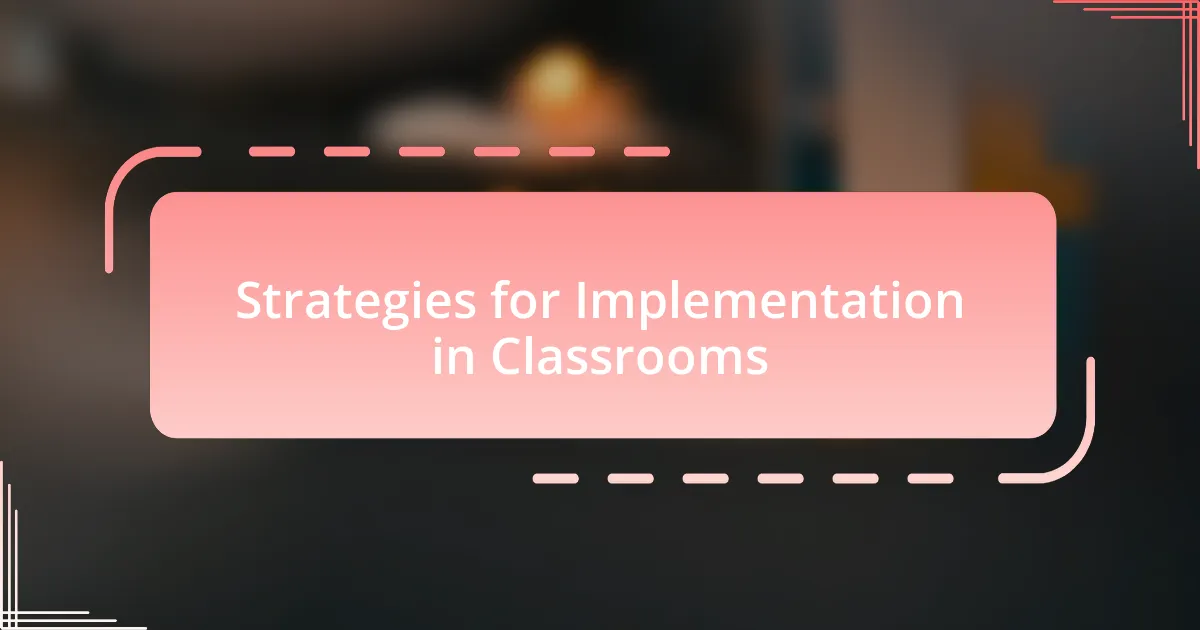
Strategies for Implementation in Classrooms
To effectively implement student-centered learning in the classroom, one strategy I’ve found valuable is incorporating project-based learning. I remember a time when my class worked on a community outreach project related to our local faith-based organization. This hands-on approach created a sense of ownership, pushing us to research and develop solutions collaboratively. Isn’t it incredible how engaging in real-world issues can deepen understanding of religious teachings?
Another practical strategy is to provide opportunities for reflective practices. I’ve noticed that when students take time to journal about their learning experiences, it often leads to profound insights. Reflection allows students to connect personal beliefs with academic content. Have you ever had an “aha” moment while writing down your thoughts? In my case, it clarified my understanding of complex religious concepts, establishing a more profound connection to the content.
Flexibility in the curriculum also plays a crucial role in student-centered learning. I’ve seen how allowing students to choose topics within a syllabus can ignite their passion. For instance, when I had the chance to present on a lesser-known religious tradition, my excitement was palpable. This autonomy encourages students to dive deeper into subjects that resonate with them, ultimately enriching their learning journey. How might giving students choices transform their engagement in the classroom? From my perspective, it empowers them to take charge of their education.
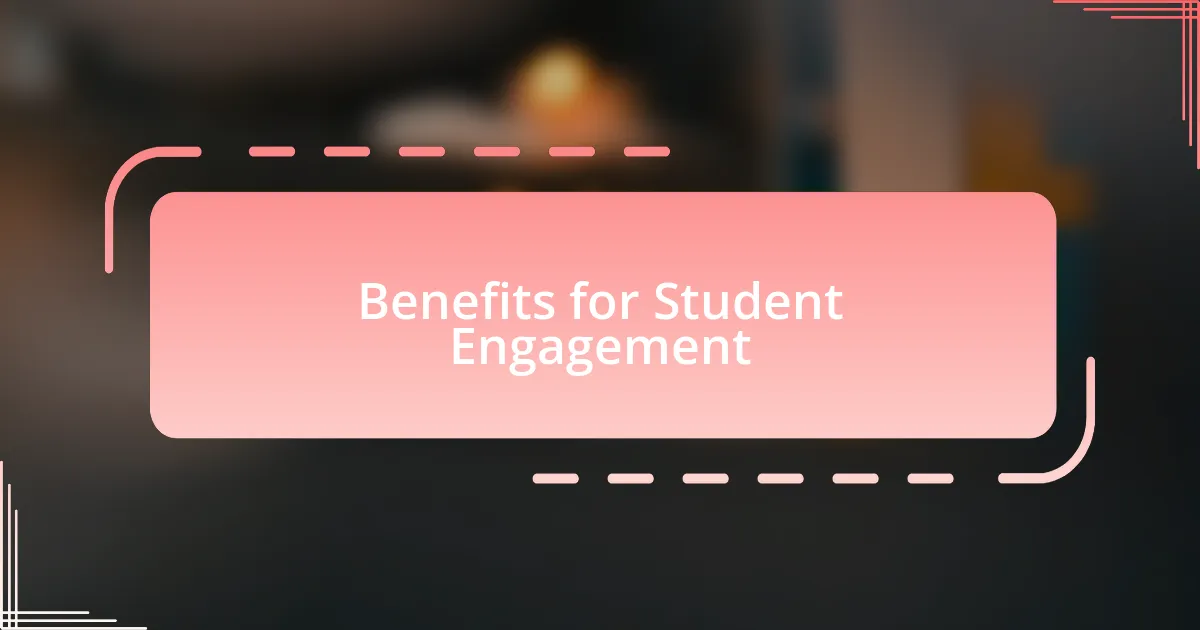
Benefits for Student Engagement
One of the most striking benefits of student-centered learning is its ability to foster genuine engagement. When students feel valued and heard, as I did during a discussion about interfaith dialogue in my religious studies class, they’re more likely to participate actively. I remember being surprised by how energized my classmates became when our instructor encouraged us to share personal experiences related to various faiths. This connection not only made the content more relatable but also created a culture of respect and curiosity in the classroom. Do you see how tapping into personal stories can ignite discussion and enthusiasm?
Another significant benefit is that it invites students to take ownership of their learning journey. In my experience, when I was allowed to lead a debate on ethical dilemmas rooted in religious texts, I felt a sense of responsibility that transformed my approach. I wasn’t just absorbing information; I was learning through exploration and collaboration. This empowerment can lead to heightened motivation, as students see the impact of their contributions on the collective learning experience. Have you ever felt that rush when your ideas resonate with others?
Finally, I’ve observed that student-centered approaches often lead to deeper emotional connections with the material. I recall a project where we explored the role of compassion in various religions. As we dove into the beliefs and practices that shape acts of kindness, I felt a profound shift within myself. This emotional engagement not only enriched my understanding but also inspired me to apply these teachings in my daily life. How does engaging emotionally with educational content change your perspective on learning? In my view, it lays the foundation for a lifelong commitment to exploring faith and spirituality.
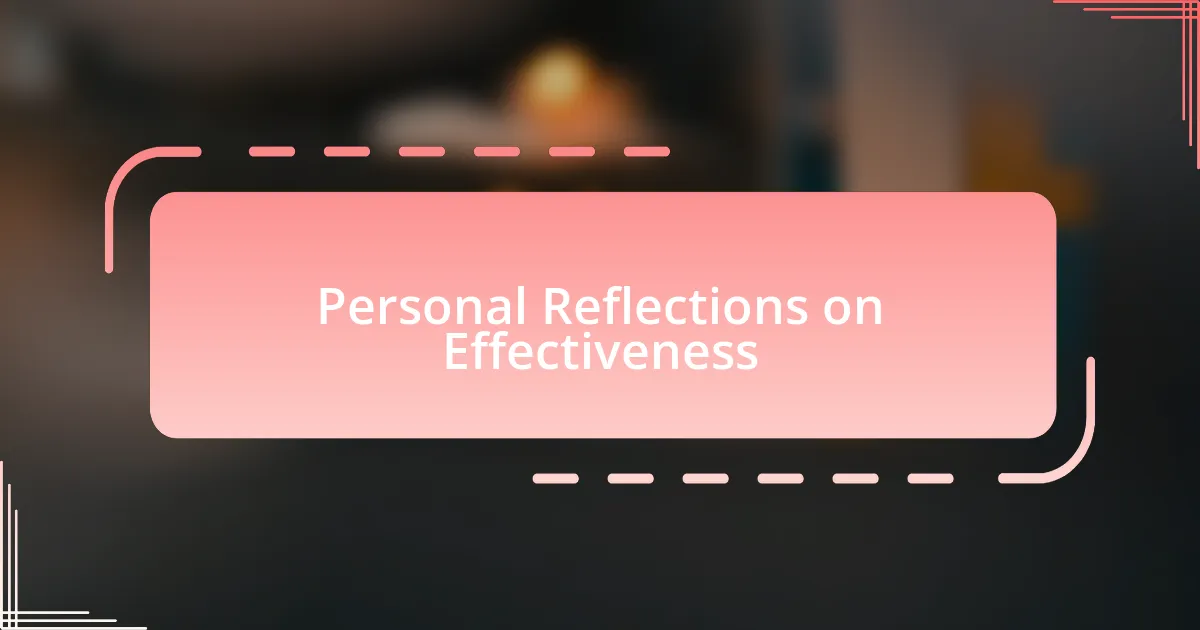
Personal Reflections on Effectiveness
While reflecting on the effectiveness of student-centered learning, I can’t help but think of a time when our class engaged in an open forum about the concept of grace in different religious traditions. The very atmosphere felt electric, as each voice added depth to the discussion. I realized that when students share personal interpretations of faith, it cultivates not just understanding but also a sense of community. Doesn’t it feel amazing to be part of something larger than ourselves?
Moreover, I’ve noticed that this approach encourages critical thinking more than traditional methods ever could. During a project where we compared ethical teachings across religions, I found myself challenged to defend my viewpoints. I still recall the thrill of discussing varying interpretations, realizing that my perspective wasn’t just my own but a piece of a bigger puzzle. How often do we get to see our ideas evolve through constructive dialogue?
Lastly, I’ve come to appreciate how student-centered learning allows for moments of vulnerability, which can be transformative. I remember sharing my struggles with faith during a group reflection and feeling an overwhelming sense of acceptance from my peers. It created a safe space to explore doubts and beliefs openly. Isn’t it powerful how authenticity can deepen connections and enhance our understanding of each other’s spiritual journeys?
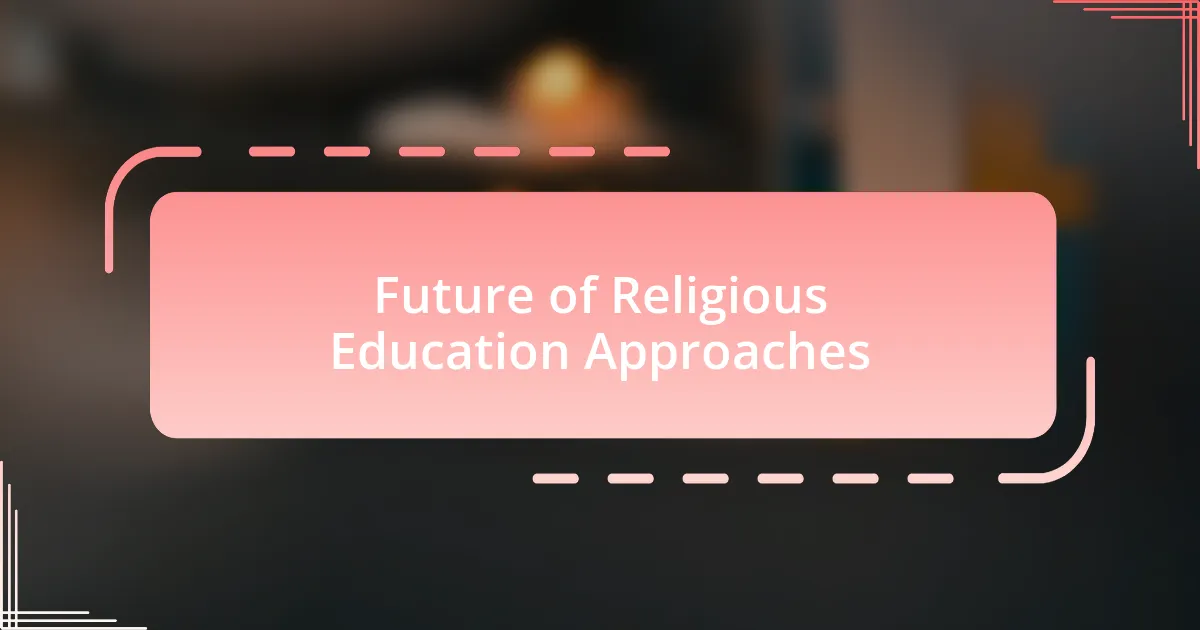
Future of Religious Education Approaches
The future of religious education approaches seems poised to embrace even more collaboration and community engagement than we see today. I vividly remember attending a workshop where participants created interfaith projects aimed at bridging diverse beliefs. It struck me how this method not only informed students but also built lasting relationships across faith lines. What if we continued to break these barriers, fostering environments where mutual respect flourishes?
Looking ahead, I see technology playing a critical role in shaping religious education. During a recent online seminar, I experienced firsthand how virtual discussions allowed us to connect with educators and learners from around the globe. It was thrilling to hear varying perspectives on spirituality and ethics in real-time. Could this digital connectivity be the key to enriching our understanding of religious diversity?
Additionally, the integration of experiential learning will likely be crucial in future approaches to religious education. Reflecting on my own experiences volunteering in interfaith community service projects, I felt that engaging directly with different belief systems provided insights that traditional learning could never replicate. How transformative would it be if all students had the chance to experience faith in action, deepening their understanding in ways that textbooks alone cannot?